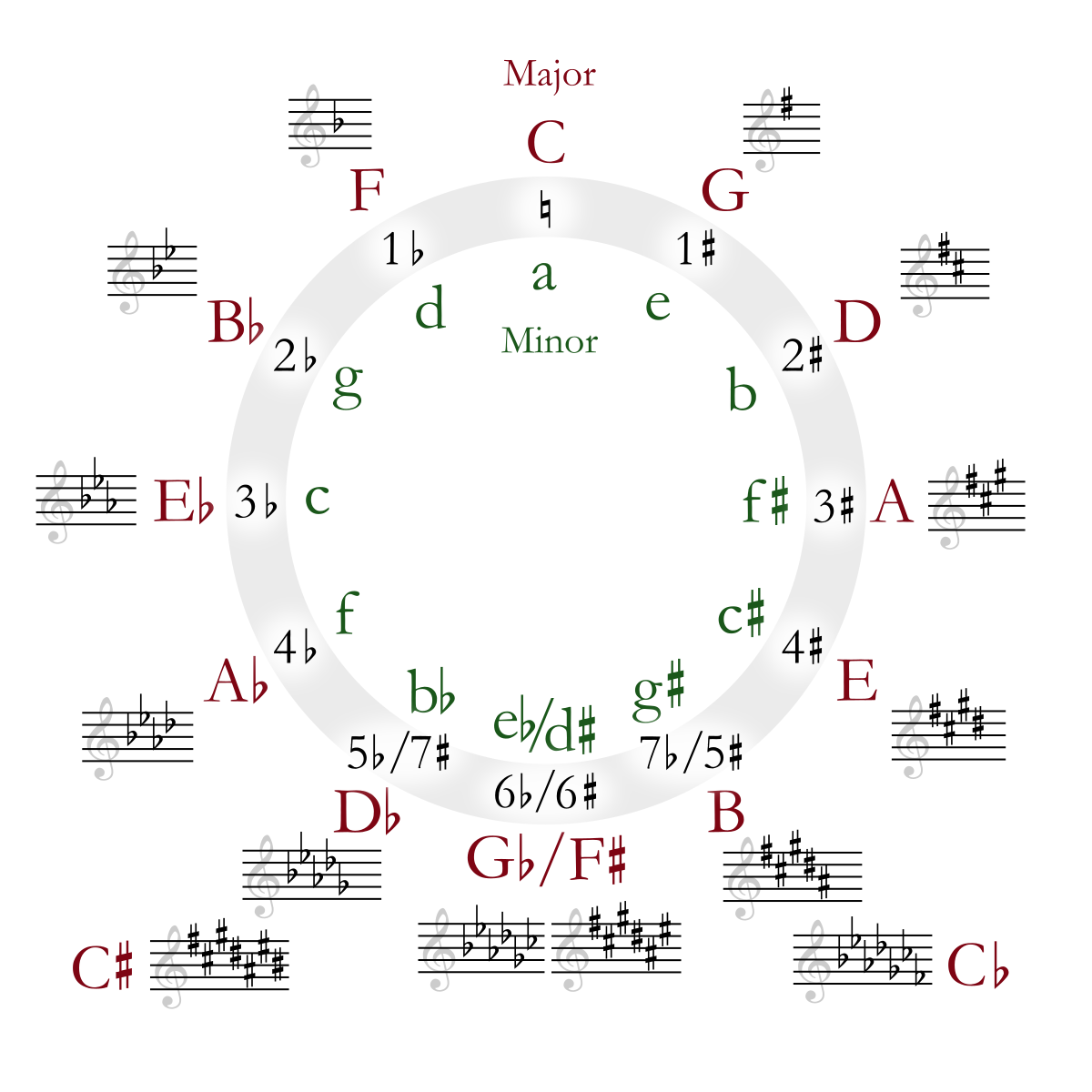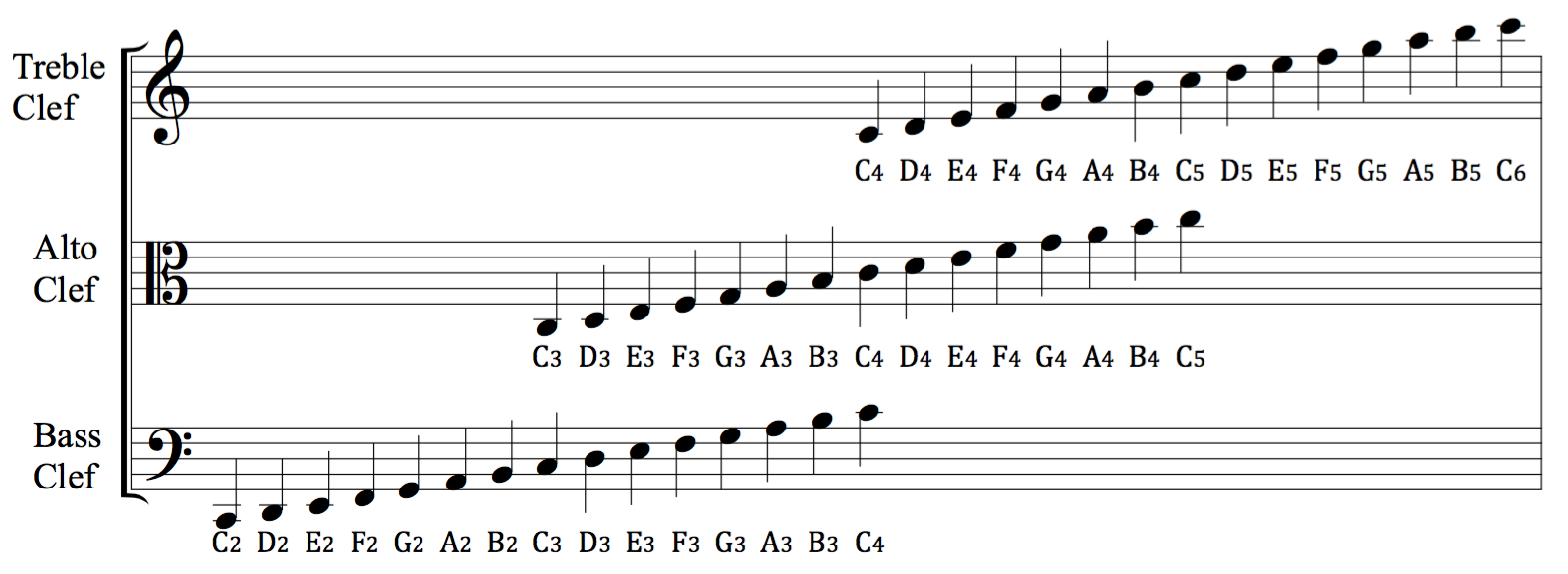Pitch – Keys & Clefs
Keys
Composers use sharps (#) and flats (b) at the beginning of a line of music to tell us which key we are in.
Instructions: Watch the videos, then click here for a game based on what you learned!
Key Signatures
Key Signatures are placed at the beginning of a line of music and sometimes change throughout the work. They help our ear determine which notes are most important.
Watch the video for an explanation by Columbus Symphony Principal Trombonist Andy Millat.
Circle of Fifths

Most pieces of music are either in a major key or a minor key. There are 12 major keys and 12 minor keys as shown in the Circle of Fifths.
Watch the video for an explanation by Columbus Symphony Principal Violist Karl Pedersen.
Clefs
There are 7 notes in the musical alphabet: A, B, C, D, E, F, and G.
Composers write music on the grand staff, which is made up of 5 lines and 4 spaces. Clefs tell us which notes are which.

Instructions: Watch the videos below, then click here for a game based on what you learned!
Treble Clef

Small instruments that play high notes like the violin, flute, oboe, clarinet, and trumpet use the treble clef.
To help us remember the notes on the treble clef, we use the phrase Every Good Boy Deserves Fudge for the lines and the word FACE for the spaces.
Watch the video for an explanation by Columbus Symphony Violinist Joyce Fishman.
Bass Clef

Big instruments that play low notes like the cello, bass, bassoon, trombone, and tuba use the bass clef.
To help us remember the notes on the bass clef, we use the phrase Good Boys Do Fine Always for the lines and the phrase All Cows Eat Grass for the spaces.
Watch the video for an explanation by Columbus Symphony Bassist Russell Gill.
Alto Clef

The alto clef is the most rare clef.
Medium-sized instruments that play notes in the middle range like the viola use the alto clef.
To help us remember the notes on the alto clef, we use the phrase Fat Aardvarks Can’t Eat Goats for the lines and the phrase Great Big Dogs Fight for the spaces.
Watch the video for an explanation by Columbus Symphony Violist Mary Farrington.
Privacy | Join our eClub ©2020 Columbus Symphony Orchestra · Registered 501(c)(3). EIN: 31-6402408





